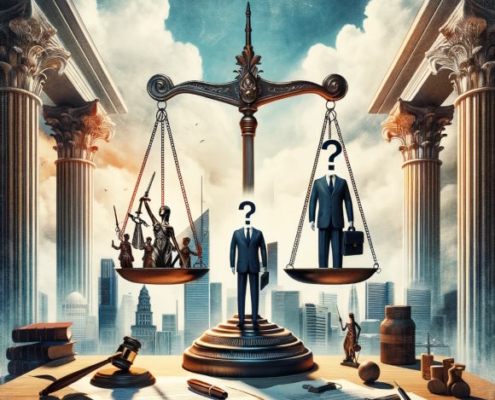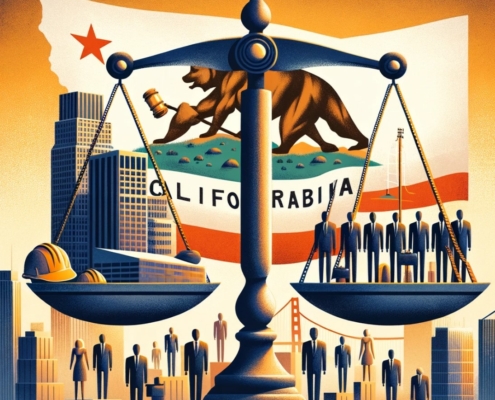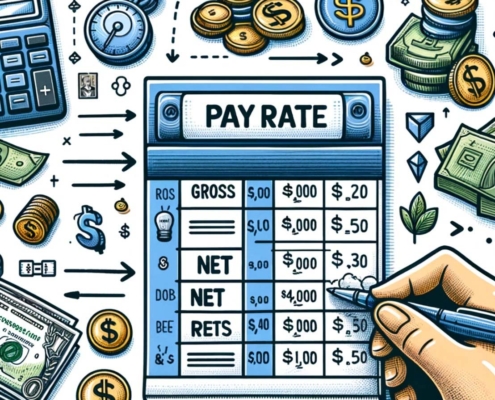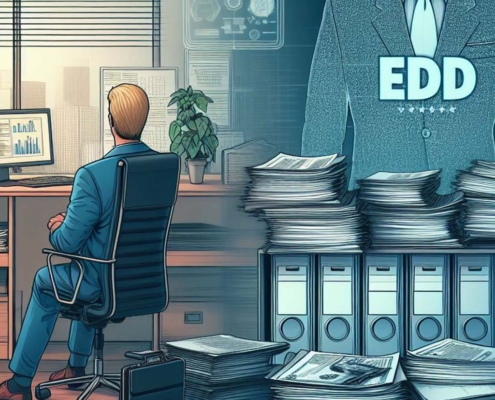California Race Discrimination Law and Elements
Under Title VII, equal employment opportunity cannot be denied any persons because of their race.
By Brad Nakase, Attorney
Email | Call (800) 484-4610
Get Smarter. Search FAQs.
Definition
Illegal under both California and federal law, race discrimination in the workplace involves treating an applicant or employee unfavorably because he or she is of a certain race or because of personal characteristics associated with race (such as hair texture, skin color, or certain facial features).
Disparate treatment discrimination happens when an employee is specifically targeted or singled out because of their protected characteristic. In these kinds of cases, the employer’s actions must be motivated by discriminatory intent. (Abed v. Western Dental Services, Inc. (2018) 23 Cal.App.5th 726, 737.)
Laws Protecting Against Racial Discrimination
Unfortunately, employment discrimination occurs everywhere, whether we like it or not. Discrimination in the workplace creates a difficult problem for not only the victim but the employer as well. When employees sue their employer for offensive, discriminatory behavior, the results can damage the company’s reputation and lead to dismissals, firings, and even entire companies shutting down.
- The California statute prohibiting race discrimination is the Fair Employment and Housing Act (“FEHA”). (Gov. Code, § 12940, et seq.)
- The federal counterpart to FEHA, Title VII of the Civil Rights Act of 1964 (42 U.S.C. §2000e, et seq.), enforced by the EEOC protects against employment discrimination based on race. Because FEHA and Title VII of the Federal Civil Rights Act of 1964 have the same anti-discrimination objectives and public policy purposes, California courts may rely on federal decisions to interpret analogous parts of the state statute. (Wade v. Ports America Management Corp. (2013) 218 Cal.App.4th 648, 652.)
Employment discrimination occurs when an employer treats a worker, or job applicant, poorly based on the individual’s characteristics. These protected characteristics include gender, sex, veteran status, race, religion, gender identity, sexual orientation, country of origin, disability, and color.
Employees who sue their managers or supervisors generally rely on three strategies: direct evidence, circumstantial evidence, and pattern and practice. Direct evidence is indisputable because it is rooted in fact, while circumstantial evidence relies on inferred statements.
When employees sue their employers, their chances of success are difficult to estimate since every situation is vastly different. However, when workers possess convincing evidence against their employer, such as witnesses or written records like emails and texts, their chances of success increase.
Employers should always contact an employment litigation attorney for employers when faced with a race discrimination lawsuit. However, when a manager, for example, discriminates against one of the workers on his team, the employee should take legal action.
In this article, we will examine employment discrimination cases from various angles and detail what conditions create a successful discrimination case and the nature of the consequences of discriminatory actions in the workplace.
Element 1: Covered Employer
An employer includes any person or entity regularly employing five or more persons. (Mathews v. Happy Valley Conference Center, Inc. (2019) 43 Cal.App.5th 236, 260, quoting Gov. Code, § 12926, subd. (d).)
Covered: Agents of Covered Employers
An agent is a person who represents another person or an entity in dealing with third persons. Under California law, agents of covered employers are also considered employers. (Gov. Code, § 12926, subd. (d).) To determine whether someone is an agent of an employer, courts look at the amount of control the employer exercises over them. (Patterson v. Domino’s Pizza, LLC (2014) 60 Cal.4th 474, 492.)
Covered: State, Cities, and Political or Civil Divisions
The state, cities, and any political or civil division of the state are covered employers. (Gov. Code, § 12926, subd. (d).)
Covered: Labor Organizations
A labor organization, like an employer, cannot discriminate on the basis of an individual’s religious creed.(Gov. Code, § 12940, subd. (a).)
A “labor organization” includes any organization that exists and is constituted for the purpose, in whole or in part, of collective bargaining or of dealing with employers concerning grievances, or terms or conditions of employment. (Gov. Code, § 12926, subd. (g).)
Covered: Individual Employees (Coworkers/Supervisors)
An employee of an entity subject to the FEHA is personally liable for any harassment prohibited that is perpetrated by the employee, regardless of whether the employer or covered entity knows or should have known of the conduct and fails to take immediate and appropriate corrective action. (Gov. Code §, 12940, subd. (j)(3).)
Note: This individual liability was only recently codified by the California Legislature after the California Supreme Court held in Reno v. Baird that individual employees are not liable under FEHA. Today, individual employees can be held liable.
No covered: Nonprofit Religious Associations and Corporations
Nonprofit religious associations and corporations are not covered employers. (Gov. Code, § 12926, subd. (d)(1).)
Element 2: Protected Employee
Protected: Employees
An employee is someone who is both a person who works under the direction and control of the employer, and a person whom the employer has agreed to hire. (Gov. Code, § 12926, subd. (c).) However, the “FEHA does not define an employer, employee, or what constitutes employment.” (Shephard v. Loyola Marymount Univ. (2002) 102. Cal.App.4th 837, 842.)
Protected: Temporary Workers
Temporary workers are considered employees. (Bradley v. California Dept. of Corrections & Rehabilitation (2008) 158 Cal.App.4th 1612.)
Protected: Job Applicants
California law expressly extends its anti-discrimination protections to applicants for employment positions. Sada v. Robert F. Kennedy Med. Ctr. (1997) 56 Cal.App.4th 138, 144.)
Protected: Unpaid Interns
Unpaid interns represent one of the few positions in which a worker will have the right to be free from discrimination despite not being an employee. (Gov. Code, § 12940, subds. (c), (j), & (l).)
Not Protected: Volunteers
Volunteers are not protected under FEHA. (Mendoza v. Town of Ross (2005) Cal.App.4th 625.)
Not Protected: Family Members
Person employed by their parents, spouse, or child are not protected under FEHA. (Mendoza v. Town of Ross (2005) Cal.App.4th 625, 632 [noting that FEHA excludes persons employed by close relatives].)
Not Protected: Independent Contractors
Independent contractors are not protected under FEHA because they do not work under the direct control and supervision of the employer. (Gov. Code, § 12940, subd. (j)(5).)
Element 3: Adverse Employment Action
“Adverse employment action” is a shorthand expression for the kind, nature, or degree of action against an employee that is enough to state a claim. (Horsford v. Board of Trustees of Calif. State Univ. (2005) 132 Cal.App.4th 359, 373.) Generally, the discrimination must adversely and materially affect the terms, conditions, or privileges of plaintiff’s employment. (Gov. Code, § 12940, subd. (a).)
An adverse employment action is interpreted liberally by the court under a case-by-case analysis, and it must be substantial. (Yanowitz v. L’Oreal USA, Inc. (2005) 36 Cal.4th 1053-1043.) Additionally. an adverse employment action may consist of a “series of subtle, yet damaging, injuries,” rather than a single actionable event. (Ibid.)
Examples
- Forcing Plaintiff to Undergo Discriminatory Tests Constitutes Discriminatory Denial Under FEHA. Forcing a plaintiff to undergo discriminatory tests and other selection procedures, publishing items or making non-related job inquiries that express discrimination, and/or failing to receive merit increases or accurate performance appraisals, constitute discriminatory denial of terms and conditions under the FEHA. (Code Regs. tit. 2, §§ 7287.1-9.)
- Not Always Necessary to Provide Evidence of Treatment of “Similarly Situated” Employees. To prove that treatment was different or disparate, it is not always necessary to produce evidence regarding the treatment of “similarly situated” employees outside the protected class. (Heard v. Lockheed Missiles & Space Co. (1996) 44 Cal.App.4th 1735.)
Element 4: Discriminatory Intent
To prevail under a disparate treatment theory of racial discrimination, a plaintiff must prove that he or she suffered an adverse action because of a protected characteristic. (Mixon v. Fair Employment & Housing Comm’n (1987) 192 Cal.App.3d 1306, 1317.) Because disparate treatment is based on intentional discrimination, a plaintiff must prove the defendant employer harbored discriminatory intent. (Scotch v. Art Inst. of Calif.-Orange County, Inc. (2009) 173 Cal.App.4th 986, 1007) (plaintiff “must prove by a preponderance of the evidence that there was a ‘causal connection’ between the employee’s protected status and the adverse employment decision.”)).
Proving Intentional Discrimination by Circumstantial or Direct Evidence
A plaintiff may prove intentional discrimination by using either direct or circumstantial evidence. (Mixon v. Fair Employment & Housing Comm’n (1987) 192 Cal.App.3d 1306, 1317.)
Direct Evidence of Discriminatory Intent
When there is direct evidence of discriminatory intent (e.g., racial epithets by a decision-maker), a plaintiff may establish discrimination by a preponderance of the evidence. Direct evidence may include derogatory racial remarks or a pervasive attitude of racial bias. (Harris v. Hughes Aircraft (1993) 19 Cal.App.4th 1552A.)
Plaintiff Has Burden of Proving Intentional Discrimination
In disparate treatment cases, the employee must prove the ultimate fact that the defendant engaged in intentional discrimination. (Arteaga v. Brink’s, Inc. (2008) 163 Cal.App.4th 327.)
Three-Part Analysis for Cases Based on Circumstantial Evidence (McDonnell Douglas Test)
In most cases, a plaintiff will not have direct evidence of the employer’s discriminatory intent. Consequently, a three-part analysis for cases based on indirect or circumstantial evidence has been established: (1) the complainant must establish a prima facie case of discrimination; (2) the employer must offer a legitimate reason for its actions; and (3) the complainant must prove that this reason was a pretext to mask an illegal motive. (Morgan v. Regents of University of California (2000) 88 Cal.App.4th 52.)
Establishing a Prima Facie Case of Discrimination
To establish a prima facie case of discrimination a plaintiff must show that: (1) he belongs to a protected class; (2) his job performance was satisfactory; (3) he was discharged (or suffered some other adverse employment action); and (4) others not in the protected class were retained in similar jobs and/or the job was filled by an individual of comparable qualifications not in the protected class. (Guz v. Bechtel National, Inc. (2000) 24 Cal. 4th 317.)
Very Little Evidence Required to Show a Prima Facie Case of Discrimination
The amount of evidence that must be produced to create a prima facie case of discrimination is “very little.” (Caldwell v. Paramount Unified School Dist. (1995) 41 Cal.App.4th 189.)
Establishing Prima Facie Case in a Wrongful Discharge Case
In a wrongful discharge case, a plaintiff usually establishes a prima facie case in one of two ways: either he was replaced by a non-minority member no more qualified than he, or he was fired when minority co-workers similarly situated were not fired. (Mixon v. Fair Employment and Housing Comm’n (1987) 192 Cal.App.3d 1306.)
After a Prima Facie Case is Established, Burden Shifts to Defendant
Once a prima facie case is established, the burden of production shifts to the defendant to articulate a legitimate, nondiscriminatory business reason for the adverse action. (Nakai v. Friendship House Assn. of American Indians, Inc. (2017) 15 Cal.App.5th 32.)
Discharging Employee for Economic Reasons Is Not Discriminatory
Discharging an employee for economic reasons (i.e., as part of a reduction-in-force) may be sufficient justification as a matter of law. (Clutterham v. Coachmen Indus., Inc. (1985) 169 Cal.App.3d 1223.)
Believing Employee Engaged in Misconduct Is A Legitimate Business Reason
Terminating an employee based on a good faith belief that an employee engaged in misconduct is a legitimate business reason. (Khajavi v. Feather River Anesthesia Medical Group (2000) 84 Cal.App.4th 32.)
Plaintiff Can Still Rebut to Show Discrimination
If the employer meets its burden of production, the plaintiff may still prevail by showing by a preponderance of evidence that the discriminatory reason more likely than not motivated the employer or that the employer’s proffered reason is a pretext for discrimination and is unworthy of credence. (Sandell v. Taylor-Listug, Inc. (2010) 188 Cal.App.4th 297.)
Filing a Racial Discrimination Claim: Must Exhaust Administrative Remedies
Before filing a statutory race discrimination claim, the employee must exhaust available administrative remedies by filing a charge of race discrimination with the California Department of Fair Employment & Housing (“DFEH”). (Gov. Code, § 12960.)
Statute of Limitations
The employee must file a civil lawsuit within one year from the date that the DFEH issues a “right-to-sue” notice to the employee. (Gov. Code, §12965, subd. (b).)
Right to Sue After One Year of Filing With DFEH
An employee’s right to sue arises by operation of law when the Department of Fair Employment and Housing fails to resolve the matter within one year from the time the employee first filed an administrative complaint for discrimination. The employee’s failure to obtain a second right to sue letter does not preclude a finding that the employee exhausted all required administrative remedies. (Grant v. Comp USA, Inc. (2003) 109 Cal.App.4th 637.)
Remedies
Compensatory Damages
The plaintiff may recover damages if he or she demonstrates that the Defendant engaged in discriminatory practice or discriminatory practices with malice or with reckless indifference. (Stirlen v. Supercuts, Inc. (1997) 51 Cal.App.4th 1519.)
Punitive Damages
Where an action is pleaded under the Fair Employment and Housing Act for discrimination, the same opportunity to plead and recover punitive damages exists. (Monge v. Superior Court (1986) 176 Cal.App.3d 503.)
Injunctive Relief
Injunctive relief is an appropriate remedy where a business engages in unlawful discrimination since an employer that so discriminates may have an unfair advantage over one that complies with the FEHA. Injunctive relief can include reinstatement of the wrongfully terminated employee. (Herr v. Nestle U.S.A., Inc. (2003) 109 Cal.App.4th 779.)
Prejudgment Interest
Prejudgment interest accompanies a backpay award in order to make the employee whole. (Currie v. Workers’ Comp. Appeals Bd. (2001) 24 Cal.4th 1109.)
Attorneys’ Fees and Costs
The court, in its discretion, may award to the prevailing party, including the department, reasonable attorney’s fees and costs, including expert witness fees. (Gov. Code, § 12965, subd. (b).)
Lost Compensation
Back Pay
Back pay restores a plaintiff in an employment discrimination case to the position he or she would have occupied but for the discrimination. (Lozada v. City and County of San Francisco (2006) 145 Cal.App.4th 1139.)
Front Pay
Front pay as the term is used in employment litigation, is a measure of damages for loss of future income, as opposed to backpay, which is lost-wages damages through the time of trial. If the judge orders reinstatement of a fired employee, front pay might be awarded to make up a wage differential if there were no vacancy into which the employee could immediately be reinstated or promoted. (Horsford v. Board of Trustees of California State University (2005) 132 Cal.App.4th 359.)
Affirmative Defenses
Bona fide Occupational Qualification
An employer may assert the bona fide occupational qualification (BFOQ) defense to a disparate treatment claim where the employer has a practice that on its face excludes an entire group of individuals because of their protected status. (Gov. Code, § 12940, subd. (a)(1).) This defense is a narrow exception to the general prohibition on discrimination. (Bohemian Club v. Fair Employment & Housing Com. (1984) 187 Cal.App.3d 1, 19.)
Example
Dan claims that his decision to fire Paula was lawful because he was entitled to consider her race as a job requirement. To succeed in his defense, Dan would need to prove: (1) that the job requirement was reasonably necessary for the operation of Dan’s business; (2) that Dan had a reasonable basis for believing that substantially all members of Paula’s race/ethnic group are unable to safely and efficiently perform that job; (3) that it was impossible or highly impractical to consider whether each employee was able to safely and efficiently perform the job; and (4) that it was impossible or highly impractical for Dan to rearrange job responsibilities to avoid using race/ethnicity as a job requirement.
After-Acquired Evidence
This equitable defense applies where an employer learns, after a termination, that the employee committed additional termination-worthy wrongdoing, such as résumé fraud or on-the-job misconduct. (Salas v. Sierra Chem. Co. (2014) 59 Cal.4th 407, 428.)
Have a quick question? We answered nearly 2000 FAQs.
See all blogs: Business | Corporate | Employment
Most recent blogs:































